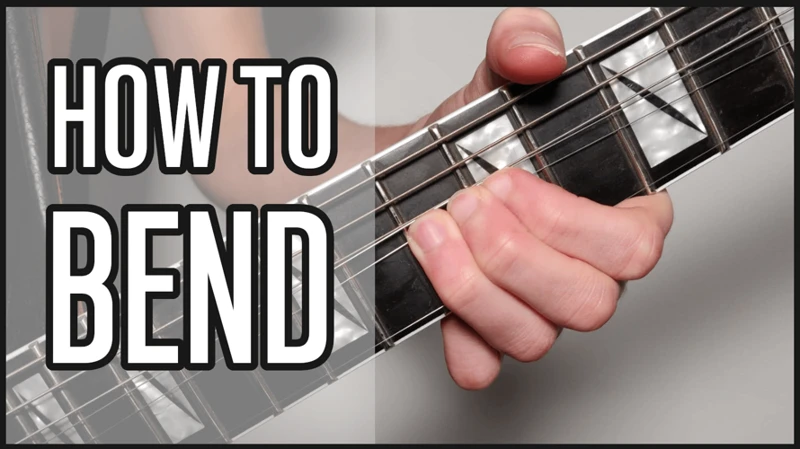Creating a perfect vibrato bending technique on a guitar is a skill that can truly elevate your playing and add depth and emotion to your music. Vibrato bending is a technique that involves bending a string while simultaneously applying vibrato, resulting in a smooth, expressive sound that can captivate listeners. In this article, we will explore some tips and techniques to help you master the art of perfect vibrato bending and take your guitar playing to the next level.
Understanding Vibrato Bending
Before diving into tips for perfecting your vibrato bending technique, it’s essential to understand what vibrato bending is and how it differs from regular bending. Vibrato bending involves bending a string up or down while maintaining the bend and applying vibrato, which is a slight fluctuation in pitch that adds a shimmering effect to the note. This technique is commonly used in blues, rock, and other genres to add expression and emotion to guitar solos and melodies.
Tip 1: Start Slow and Gradually Increase Speed
One of the keys to mastering vibrato bending is to start slow and gradually build up speed and control. Begin by practicing bending a string without adding vibrato, focusing on hitting the target pitch accurately. Once you feel comfortable with the bending motion, start incorporating vibrato by gently shaking the bent note back and forth to create a subtle wavering effect. As you practice, gradually increase the speed and depth of your vibrato while maintaining control over the pitch.
Tip 2: Use Your Wrist and Fingers
To achieve a smooth and controlled vibrato bend, it’s important to utilize both your wrist and fingers. Start by bending the string with your fingers while supporting the motion with your wrist to create a fluid bending action. As you apply vibrato, use a combination of wrist movements and finger pressure to control the speed and width of the vibrato. Experiment with different wrist and finger techniques to find a comfortable and effective approach that works for you.
Tip 3: Focus on Tone and Intonation
When practicing vibrato bending, pay close attention to your tone and intonation. Aim to bend the string evenly and smoothly to maintain a consistent tone throughout the vibrato. Avoid over-bending or under-bending the string, as this can result in pitch inconsistencies and a less desirable sound. Practice bending the string to different intervals and experiment with varying speeds and widths of vibrato to develop a strong sense of intonation and control over your tone.
Tip 4: Develop Finger Strength and Endurance
Building finger strength and endurance is crucial for mastering vibrato bending, as it requires a combination of precise finger movements and sustained pressure. Incorporate finger exercises and scales into your practice routine to strengthen your fingers and improve dexterity. Focus on maintaining a relaxed grip on the guitar neck while applying pressure to bend the string, as excess tension can lead to fatigue and hinder your ability to execute smooth vibrato bends.
Tip 5: Listen to Masters of Vibrato Bending
One of the best ways to improve your vibrato bending technique is to listen to and study the playing of guitarists known for their exceptional vibrato skills. Take time to listen to recordings of legendary guitarists such as Jimi Hendrix, Stevie Ray Vaughan, and David Gilmour, who are renowned for their expressive vibrato bending techniques. Pay attention to the nuances in their playing, including the speed, depth, and emotion they convey through their vibrato bends, and incorporate elements of their style into your own practice and performance.
Tip 6: Experiment with Different Vibrato Styles
Vibrato bending is a versatile technique that can be tailored to suit different musical styles and genres. Experiment with various vibrato styles, such as wide, slow vibrato for a soulful blues sound or fast, narrow vibrato for a more aggressive rock feel. Try incorporating vibrato bends into different scales, arpeggios, and licks to explore the full range of expression that vibrato bending can offer. By experimenting with different styles and approaches, you can discover your unique vibrato bending voice and develop a signature sound that sets you apart as a guitarist.
Tip 7: Record and Analyze Your Playing
Recording your practice sessions and performances is a valuable tool for improving your vibrato bending technique. Listen back to your recordings to identify areas for improvement, such as pitch inconsistencies, uneven vibrato, or lack of control. Pay attention to your tone, intonation, and overall expression to pinpoint areas where you can refine your vibrato bending skills. Analyzing your playing with a critical ear will help you track your progress over time and make targeted adjustments to enhance your vibrato bending technique.
Tip 8: Practice with Backing Tracks and Jam Along
Practicing vibrato bending with backing tracks and jamming along to music is a fun and effective way to refine your technique and develop your musicality. Play along with backing tracks in different keys and tempos to work on your vibrato bending in various musical contexts. Experiment with improvisation and soloing to incorporate vibrato bends into your playing naturally and spontaneously. Jamming with other musicians or recording your own backing tracks can also provide opportunities for collaboration and creative expression while honing your vibrato bending skills.
Tip 9: Seek Feedback and Guidance
Don’t hesitate to seek feedback and guidance from experienced guitarists, instructors, or fellow musicians to help you improve your vibrato bending technique. Join online forums, attend workshops, or take lessons to receive personalized feedback and advice on your playing. Collaborating with others and sharing your progress can offer fresh perspectives and insights that can inspire new ideas and approaches to vibrato bending. Embrace constructive criticism and use it as a tool for growth and development as you strive to perfect your vibrato bending skills.
Tip 10: Stay Patient and Persistent
Perfecting vibrato bending is a journey that requires patience, persistence, and dedication to continuous improvement. Set realistic goals for your practice sessions and track your progress over time to stay motivated and focused on refining your technique. Celebrate small victories along the way and acknowledge the progress you make, even if it may seem incremental at times. Remember that mastering vibrato bending is a gradual process that takes time and effort, so stay committed to your practice routine and trust in your ability to achieve your musical goals.
Looking to improve your guitar skills? Check out our articles on string care tips, flatpicking techniques, electric guitar tapped arpeggios, country strumming tips, and flatpicking finger exercises for valuable insights and advice!
Conclusion
In conclusion, mastering the art of perfect vibrato bending on the guitar can greatly enhance your playing and add depth and emotion to your music. By incorporating these tips and techniques into your practice routine, you can develop a strong foundation for executing smooth and expressive vibrato bends with control and confidence. Remember to start slow, focus on tone and intonation, build finger strength, experiment with different styles, and seek feedback to continually refine your vibrato bending skills. With patience, persistence, and a passion for music, you can unlock the full potential of vibrato bending and elevate your guitar playing to new heights.


